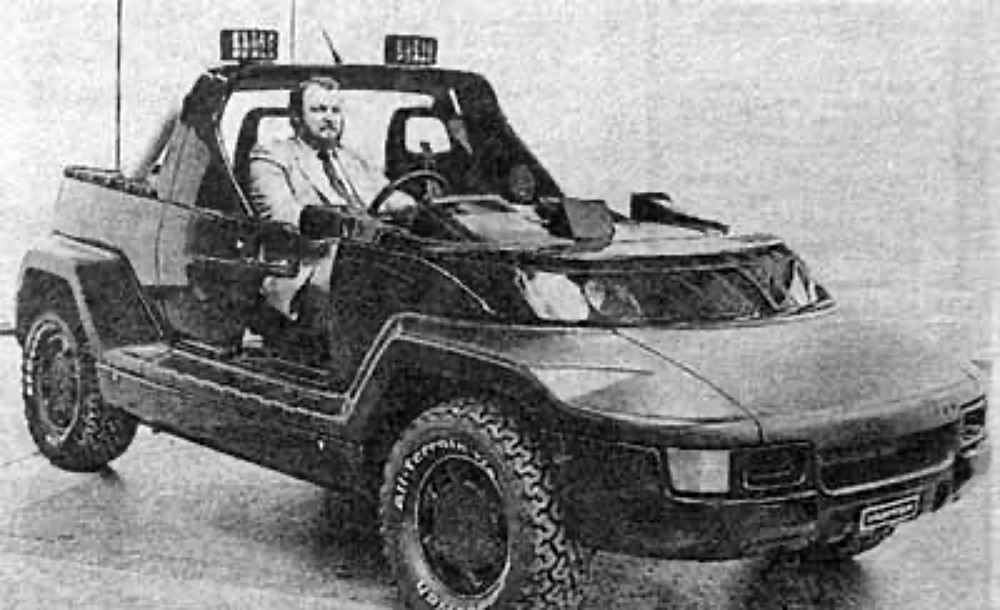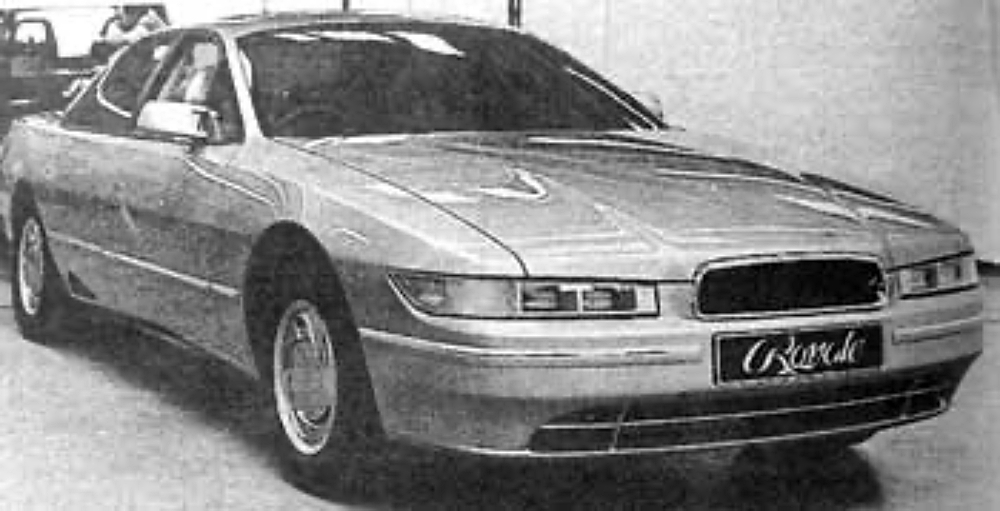When our cars led the way
IN the 1980s, International Automotive Design – or IAD as it was better known – was at the pinnacle of its success, with a highly skilled workforce of 800 manning no fewer than 23 factories in Worthing where, shrouded in secrecy, they designed cars of the future for automobile manufacturers around the globe.

Yet, today, IAD is history, erased like so many other British car designers and manufacturers from an international industry that continues to supply one of the most sought-after consumer products of the modern world.
Freddie Feest recalls how, in the 1980s, Worthing – and IAD in particular – was considered by the car-makers of Japan, South Korea, Malaysia, Germany, Italy, France, Australia and America to be an important source of innovative and exciting car design.
THE Italian Motor Show has always been considered the world showcase for innovative automotive design and, in 1988, the spotlights in Turin were focused on two outstanding new car designs that had been created under a shroud of secrecy on the Ham Bridge trading estate in Worthing.
Their manufacturer was International Automotive Design (IAD), well on track to becoming one of Worthing’s most successful companies.
It had been started 12 years earlier and was headed from the beginning by its chairman, John Shute.
He had given up a good job working for the car-maker Austin, in Australia, to return to England and move into a small house at Shoreham.
There, with a handful of like-minded car enthusiasts and engineers, Shute worked day and night to fulfil a long-held belief that, as independent entrepreneurs offering design services to the many blossoming post-war car manufacturers of the world, they could be very successful indeed.
Many countries, especially in the Far East, were planning to produce their own cars for the first time and, with limited home-grown talent in the design field, would be particularly attracted to the high-quality car designs that Shute was convinced his team at Shoreham could produce.
The business took off with the speed of light. Within weeks, IAD was winning contracts from Malaysia, South Korea, America and even Japan itself.
As a life-long fan of MG two-seater sports cars, it was hardly surprising that John Shute, through IAD, personally contributed much to the design of a new sports car produced by Mazda of Japan.
That car, the MX5, went on to become the biggest-selling, two-seater sports car in the world and set IAD on the road to seemingly unlimited success.
As design contracts were signed with more and more fast-expanding car manufacturers around the globe, sharp-eyed car enthusiasts in Worthing and nearby towns caught occasional glimpses of cars they had never seen before – IAD prototypes on test prior to going into production, many on the other side of the world.
In Worthing, and to cope with all the work taken on during their most rapid period of expansion, IAD was soon expanding into an additional factory almost every week.
Their car designs ranged from the Hunter – a vehicle for the adventurous that showed the way to the rugged, all-terrain 4x4s so popular today – to the elegant Royale saloon, probably the most beautiful design to come out of IAD.
Philips of Holland used the latter as a test-bed for many of the electronic gizmos and goodies that we take for granted in our cars today.
It was described as a four-wheel-drive limousine for top executives and the name Royale was appropriate, for, many years earlier, the first car with this name had been built by Bugatti as their (much more expensive) answer to the Rolls-Royce.
At the Turin Show in 1988, when the IAD Royale prototype was unveiled, John Shute admitted to me that it had cost its Worthing designers in excess of £500,000, a fantastic sum in the 1980s.

“Have a nice day”.
By then, the Royale name was owned by General Motors of America, which gave IAD permission to use it for their design.
Although the Hunter was an open-top model, much attention had been paid to the “interior”.
Moulded seats and door trims were upholstered in Sorboskin, to cope with all-weather conditions.
Those parts of the interior not upholstered were covered with “soft-touch” rubberised paint.
One of the numerous unique features was an under-floor area, accessible through electrically operated doors and suitable for stowing skis or other sporting equipment such as scuba-diving gear.
Another unique feature was a navigation system, with fold-up display screen, incorporated in the console. In this system, the terrain was projected in horizontal relief, rather than flat.
And you thought electronic in-car navigation systems were something new!
At the height of its success, IAD had 800 staff in Worthing, plus many working as consultants with major car manufacturers in a dozen countries.
IAD was by this time three times the size of Ital Design, the most successful independent Italian car design firm. In 1987, IAD’s turnover had been £36.5million – 85 per cent of it export business.
In 1988, the figure exceeded £40million.
No wonder the firm won the Queen’s Award to Industry – twice. But, suddenly, the booming car industry suffered an unpredicted slump – and maybe IAD’s expansion had been too rapid for long-term success.
The over-stretched car-maker, Daewoo, collapsed and the South Korean giants defaulted on their major contracts, owing IAD a lot of money.
The combination proved a terminal blow for IAD – and the sudden death of its entrepreneurial chairman ended any hope of revival.
Worthing lost one of its most successful enterprises and the British car industry one of its most inventive teams of designers.